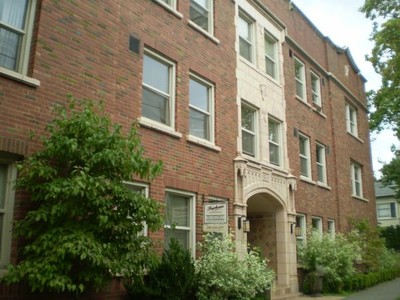 The Victoria Transport Policy Institute (VTPI) just published an exhaustive review of data about why people choose where they live. It’s interesting to me because I’ve long thought that decision makers get obsessed with very narrow concerns—like the cost of housing—when they consider policies that encourage people to choose dense, compact communities over living in more sprawling single family neighborhoods. It turns out, based on their review, that when faced with the option to choose, most people would prefer living in a dense neighborhood.
The Victoria Transport Policy Institute (VTPI) just published an exhaustive review of data about why people choose where they live. It’s interesting to me because I’ve long thought that decision makers get obsessed with very narrow concerns—like the cost of housing—when they consider policies that encourage people to choose dense, compact communities over living in more sprawling single family neighborhoods. It turns out, based on their review, that when faced with the option to choose, most people would prefer living in a dense neighborhood.
Our exploration of alternative definitions of affordable housing was an effort to open up other considerations besides per unit price and monthly income when making housing policy. Not too surprisingly, VTPI found that when making choices for housing, it comes down to trade-offs between many different benefits—not just price—and increasingly people are choosing compact communities and smaller housing formats over the standard single family home.
The review found that, in study after study, when people are asked “would you like to live in a large house, with a big yard in a city with the world’s best schools” the answer is invariably an enthusiastic “yes!” But when people are presented with various trade-offs between the ideal vision of single-family bliss and living in a compact community—commute time, proximity to amenities likes bookstores, bars, and transit—respondents often find themselves choosing the compact community.
One survey completed by the Public Policy Institute of California, found that 86 percent of respondents prefer single-family homes, but 47 percent also prefer a walkable, mixed use neighborhood, and 49 percent would live in a smaller house [link] if it shortened their commute. Transit was a factor in housing choice as well, with 31 percent indicating that they’d pick density over single-family sprawl if the neighborhood had good transit options.
And there are other things, like crime and policing, school quality, and the perceived prestige of a neighborhood, that come into play when people decide where to live.
This should put urbanists and affordable housing advocates on notice that some of the more narrow considerations to promote affordable compact communities—transit, housing price, design—are only part of what people consider when making housing choices. For example, the world’s coolest and most affordable transit-oriented development might fail if it is perceived as unsafe and serviced by terrible schools.
But here is the punch line and good news, I think, in the VTPI review:
Housing market demand analysis based on consumer preference surveys indicates that during the next two decades demand for large-lot housing will decline slightly, so current supply is sufficient to meet future needs, but demand for small lot and attached housing will approximately double.
And here’s the chart to go with that:

Policy makers should shift toward policies that allow for more diverse housing types in existing single family neighborhoods, zone for growth in existing mixed use hubs, and resist the urge to protect single family neighborhoods from growth. Currently the single family lobby in Seattle has filed an appeal to the City’s efforts to improve and expand multifamily options in the city. Seattle and all Northwest cities should resist such efforts to preserve single family neighborhoods. We know compact communities are better than sprawl. But dense, active, and walkable neighborhoods are also increasingly where people want to live.








Jon Morgan
One of the biggest things we need in the US is finance equity for education. Public ed. needs to be funded at the state level, not through cruelly unfair local property taxes. Canadian schools are funded at the provincial level, and school district barely registers as a factor in housing decisions there while it’s a major one here. Finance equity removes a major variable now favoring suburbs.